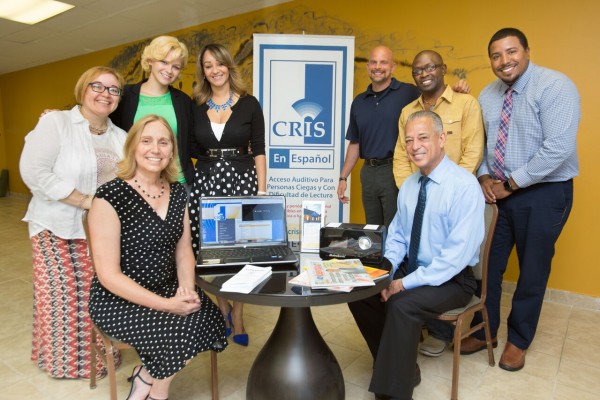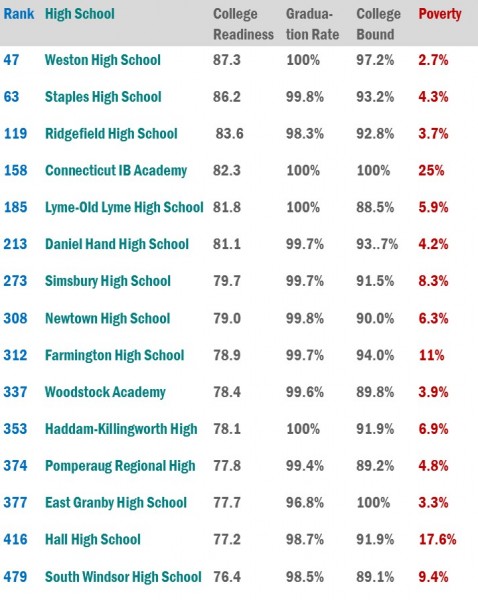First-Of-Its-Kind Audio Service for Spanish-Speakers with Print Disabilities Launched in CT
/CRIS Radio, a 36-year-old nonprofit based in Windsor and Connecticut’s only radio-reading service, has introduced its new Spanish-language streaming service, expanding the services offered by the volunteer-based organization with a longstanding, solid track-record of responsive programming.
The service, called CRIS en Español, is the first in the nation to offer an extensive line-up of audio versions of Spanish-language magazines – all featuring human narration -- for Spanish-speakers who are blind or have a print disability, including those with learning, physical, emotional or intellectual disabilities.
“This collaboration is essential to the people we serve in the Hispanic community,” said Annette Deonarine, director of Latino Initiative of Advocacy Unlimited at Toivo Center in Hartford. “It will enable people who are disabled to receive quality broadcasts that are culturally competent and in a language that is understood by many people from different Latino cultures.”
Hartford Mayor Pedro E. Segarra, who attended the launch of the new audio services, said: “CRIS Radio has for years made sure people stay connected to current events, culture and literature. I’m very grateful to see that they’re expanding this valuable service to Spanish-speaking audiences.”
Included in the CRIS en Español programming are articles published in Spanish-language magazines and newspapers such as Identidad, National Geographic in Spanish, Cosmopolitan in Spanish, Hola and People in Spanish. All CRIS recordings feature human narration, thanks to CRIS volunteers who provide the voice talent. The recordings also are available on-demand at crisradio.org or from special CRIS Internet radios.
“Thanks to funding from the Hartford Foundation for Public Giving, CRIS Radio is launching Spanish-language programming to better meet the needs of the Latino community who are blind or print disabled,” said Diane Weaver Dunne, executive director of CRIS Radio. “CRIS is now providing Internet radios tuned to CRIS en Español’s URL free-of-charge to organizations that serve Spanish-speakers with disabilities.”
CRIS (Connecticut Radio Information System) provides audio access to news and information for people who are blind or print-challenged, including those unable to read due to physical, learning, intellectual or emotional disabilities. CRIS operates with more than 300 volunteers at its broadcast center in Windsor and regional studios located in Danbury, Norwich, Trumbull, West Haven and at ESPN in Bristol.
Jon Jacobs, program director of Humanidad, which operates group homes for Spanish-speakers with intellectual and developmental disabilities in Greater Hartford, piloted the service at two group homes. “CRIS en Español is an impactful and informative service that brings Spanish-language programming right to the homes of our consumers, Jacobs said. “This is a warm, informative, and user-friendly way to bring culturally competent content to the members of our community with special needs.”
CRIS Radio broadcasts 24 hours a day, seven days a week featuring articles published in more than 70 newspapers and magazines, including award-winning children's magazines available online and on-demand. Programs powered by CRIS Radio include: CRIS Radio; CRIS Listen Now (online streaming); CRIS Listen On Demand; CRISKids, and CRISKids for Schools.
Photo: Attending the demonstration of CRIS en Español, are: (sitting), Diane Weaver Dunne, executive director of CRIS Radio; and Hartford Mayor Pedro Segarro; Standing, from left, are Standing, from left, Annette Deonarine, Yanira Rios, Alice Diaz, Deron Drumm, Kelvin Young and Jon Jacobs.
https://youtu.be/DzN3Bi-vjyw




 In 2015, just over a dozen participating schools in Connecticut included North St School (Windsor Locks), Broadview Middle School (Danbury), Eastern Middle School (Greenwich), O.H. Platt High School (Meriden), Fairfield Woods Middle School (Fairfield), Washington Middle (Meriden), Northeast (Stamford), Schaghticoke Middle School (Warren), King Street Intermediate School (Danbury), Dag Hammarskjold Middle School (Wallingford), Orville H. Platt High School (Meriden ), Avon Middle (Avon), and Moran Middle School (Wallingford).
In 2015, just over a dozen participating schools in Connecticut included North St School (Windsor Locks), Broadview Middle School (Danbury), Eastern Middle School (Greenwich), O.H. Platt High School (Meriden), Fairfield Woods Middle School (Fairfield), Washington Middle (Meriden), Northeast (Stamford), Schaghticoke Middle School (Warren), King Street Intermediate School (Danbury), Dag Hammarskjold Middle School (Wallingford), Orville H. Platt High School (Meriden ), Avon Middle (Avon), and Moran Middle School (Wallingford).

 h a cranial facial syndrome and was socially isolated during her middle school years, the organization’s website explains. After Lili died at the age of 15 due to medical complications from her syndrome, a group of teens from the local community banded together to bring change to their local schools. They had not realized that they had been leaving Lili out from all the fun social get-togethers. Upon hearing about Lili's feelings of being left out, they were determined to never let anyone feel that way again. The initiative was born.
h a cranial facial syndrome and was socially isolated during her middle school years, the organization’s website explains. After Lili died at the age of 15 due to medical complications from her syndrome, a group of teens from the local community banded together to bring change to their local schools. They had not realized that they had been leaving Lili out from all the fun social get-togethers. Upon hearing about Lili's feelings of being left out, they were determined to never let anyone feel that way again. The initiative was born.





 The most recent fee data available from 2-1-1 Child Care estimates the statewide average cost of full-time child care in a licensed center-based day care setting is $211/week for 1 preschooler and $253/week for an infant, which adds up to $2,011 per month. This may be less than what many Connecticut families pay for child care each month, due to variations in cost and availability throughout the state, differences in family size, and other costs associated with child care that are not included—such as the cost of alternate care arrangements when the child care setting is closed
The most recent fee data available from 2-1-1 Child Care estimates the statewide average cost of full-time child care in a licensed center-based day care setting is $211/week for 1 preschooler and $253/week for an infant, which adds up to $2,011 per month. This may be less than what many Connecticut families pay for child care each month, due to variations in cost and availability throughout the state, differences in family size, and other costs associated with child care that are not included—such as the cost of alternate care arrangements when the child care setting is closed


 The Center’s study found that over the past year, as states have started to restore funding for public higher education, tuition hikes have been much smaller than in recent years. Just seven states -- Louisiana, Colorado, Connecticut, Hawaii, Kansas, Virginia, and Mississippi -- raised tuition by more than $300, after inflation.
The Center’s study found that over the past year, as states have started to restore funding for public higher education, tuition hikes have been much smaller than in recent years. Just seven states -- Louisiana, Colorado, Connecticut, Hawaii, Kansas, Virginia, and Mississippi -- raised tuition by more than $300, after inflation.



































